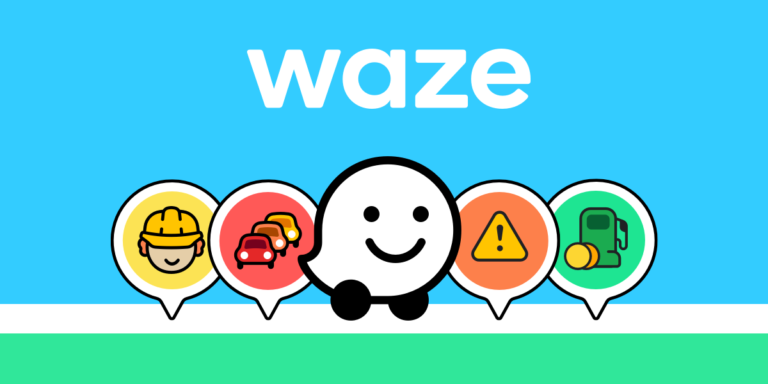Introduction
Stack Overflow, the flagship site of the Stack Exchange network, is the indispensable question-and-answer platform for professional and enthusiast programmers. Its success hinges on its ability to attract knowledgeable individuals willing to share their expertise freely and to curate high-quality answers that remain relevant over time. At the heart of Stack Overflow’s operational model lies a sophisticated and highly effective gamification system designed to incentivize participation, reward quality contributions, establish trust, and manage a vast repository of technical knowledge.
The Challenge: Building and Maintaining a High-Quality Knowledge Base
Creating a reliable resource for complex technical questions faces several hurdles:
- Motivation: Why would busy experts spend their valuable time answering strangers’ questions for free?
- Quality Control: How can the platform ensure answers are accurate, clear, and helpful, distinguishing good information from bad?
- Organization & Discovery: How can users easily find the best answers among potentially numerous responses to similar questions?
- Community Governance: How can a large, diverse community effectively moderate content and maintain constructive norms?
Stack Overflow tackled these challenges by embedding game mechanics directly into the fabric of asking, answering, and evaluating content.
Gamification Elements in Stack Overflow
Stack Overflow’s gamification is centered around reputation, recognition, and earned privileges:
- Reputation Points:
- Mechanic: This is the core currency. Users earn reputation points primarily when their questions or answers are upvoted by others. They lose points if their content is downvoted. Specific actions like suggesting edits or having an answer accepted also grant reputation.
- Gamification Principle: Points System, Social Validation, Status.
- Impact: Reputation serves as a direct measure of community trust and perceived expertise. Earning reputation is the primary driver for many users, signifying their contribution and standing within the community.
- Privileges:
- Mechanic: As users gain reputation, they unlock specific abilities or “privileges” on the site. These range from basic actions like upvoting (low reputation required) to commenting everywhere, editing posts, casting close/reopen votes, and eventually accessing moderation tools (high reputation required).
- Gamification Principle: Levels, Progression, Unlocking Abilities, Tiered Access.
- Impact: Creates a compelling progression path. Users are motivated to gain reputation not just for status, but for the tangible ability to participate more fully in the site’s operation and quality control mechanisms. It effectively delegates moderation tasks to trusted community members.
- Badges:
- Mechanic: Users earn badges (Bronze, Silver, Gold) for achieving specific milestones or demonstrating desired behaviors. These range from simple actions (“Autobiographer” for filling out a user profile) to significant achievements (“Great Answer” for an answer scoring 100+ upvotes) or consistent participation (“Yearling” for being active for a year with sufficient reputation). Many badges are tied to specific programming language tags.
- Gamification Principle: Achievements, Collection, Recognition, Specialization (Tag Badges).
- Impact: Provides recognition for a wide variety of contributions beyond just raw reputation score. Encourages specific positive behaviors (e.g., editing, participating in meta-discussions, answering questions in niche tags) and caters to the “collector” motivation.
- Voting System (Upvotes/Downvotes):
- Mechanic: Users with sufficient reputation can vote on the quality of questions and answers. Upvotes increase visibility and grant reputation; downvotes decrease visibility and cost the voter and recipient a small amount of reputation. The “Accepted Answer” checkmark, given by the question asker, provides additional recognition.
- Gamification Principle: Feedback Mechanism, Quality Sorting, Social Curation.
- Impact: This is the primary quality control mechanism. It leverages the collective intelligence of the community to surface the best answers and bury poor ones. The act of voting itself is a form of participation driven by the desire to curate good content (and enabled by reputation).
- Bounties:
- Mechanic: Users can attach a portion of their own reputation points to a question (a “bounty”) to attract more attention and higher-quality answers, especially for difficult or unanswered questions. The bounty is awarded manually by the asker or automatically to the highest-voted new answer.
- Gamification Principle: Quests (with rewards), High Stakes, Resource Allocation.
- Impact: Allows users to “spend” their earned reputation to incentivize answers to questions they care about, creating a dynamic way to direct community attention.
- User Profiles:
- Mechanic: Profiles prominently display a user’s reputation, badges earned, top-performing questions/answers, and activity in specific tags.
- Gamification Principle: Identity, Status Display, Portfolio.
- Impact: Serves as a public showcase of a user’s contributions, expertise, and standing within the community, reinforcing the value of reputation and badges.
Impact on Community Building and Quality
Stack Overflow’s gamification system is highly effective because:
- Intrinsic & Extrinsic Motivation: It blends extrinsic rewards (reputation, badges, privileges) with intrinsic motivators like demonstrating expertise, helping others, building a professional reputation, and the satisfaction of solving problems.
- Quality Focus: The voting and reputation system directly incentivizes high-quality, helpful answers and discourages low-effort or incorrect ones.
- Self-Governance: The privilege system effectively outsources moderation and quality control to trusted, high-reputation users, allowing the platform to scale.
- Trust & Credibility: Reputation acts as a reliable proxy for expertise and trustworthiness within the community.
- Structured Participation: Badges and privileges guide users towards constructive participation patterns.
Overall Score: 5/5
Stack Overflow arguably deserves a perfect score for its masterful implementation of gamification tailored specifically to its goal: building and maintaining the world’s largest, highest-quality repository of programming knowledge. The system is deeply integrated, directly drives the desired behaviors (asking good questions, providing great answers, curating content), and successfully motivates a massive global community of experts to contribute freely. Its reputation and privilege system is a benchmark for community-driven quality control and governance.
Pros of Stack Overflow’s Gamification Approach
- Exceptional Quality Control: Voting and reputation effectively surface high-quality answers.
- Strong Motivation: Reputation, badges, and privileges provide compelling reasons to participate.
- Scalable Moderation: The privilege system enables effective community self-governance.
- Clear Progression: Users have a clear path to increased influence and capabilities.
- Builds Credibility: Reputation serves as a valuable indicator of expertise, useful even outside the platform.
- Encourages Positive Behaviors: Badges reward diverse contributions beyond just answering questions.
Cons of Stack Overflow’s Gamification Approach
- Steep Learning Curve: New users can find the rules, expectations, and reputation system intimidating (“getting downvoted hurts”).
- Potential for Elitism/Gatekeeping: High-reputation users hold significant power, which can sometimes lead to perceived unwelcoming behavior towards newcomers.
- “Reputation Gaming”: Some users may focus on easily answerable questions (“rep farming”) rather than tackling harder problems.
- Question Quality Issues: While the system incentivizes good answers, motivating users to ask well-researched, clear questions remains a challenge.
- Stress/Anxiety: The public nature of reputation and voting can be stressful for some contributors.
Conclusion
Stack Overflow stands as a monumental success story in leveraging gamification for knowledge sharing and community building. Its carefully crafted system of reputation, badges, and privileges effectively motivates experts to contribute, ensures the quality of information, and enables scalable community governance. While not without its criticisms regarding newcomer friendliness, its core gamification model has proven incredibly robust and effective, making it an essential resource for developers worldwide and a key case study for anyone looking to build a thriving online community centered around expertise.
Estimated reading time: 6 minutes




